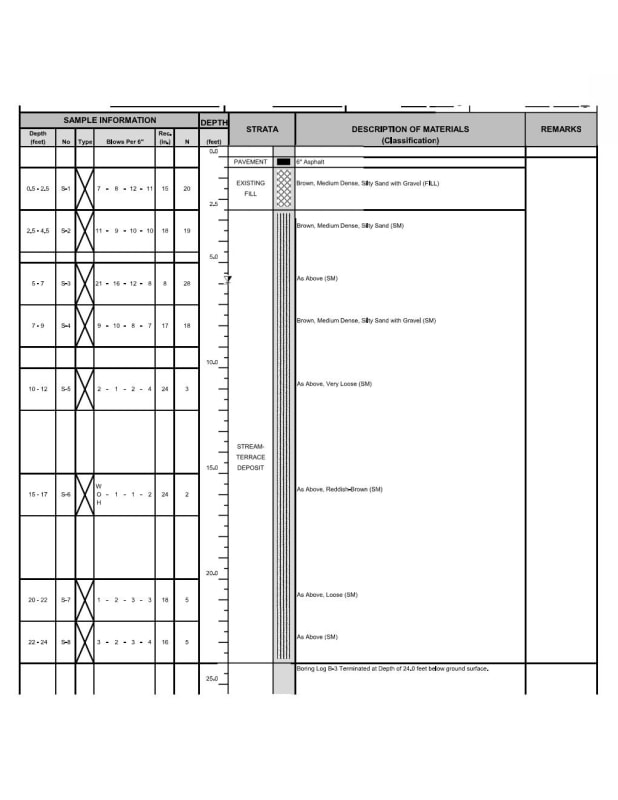SteelPE
Structural
- Mar 9, 2006
- 2,759
I would post this in the Geotechnical forum., but that forum isn't as active as this one.....
I have a project that I am designing a foundation for. The project is a single story industrial/manufacturing building that will be constructed using a metal building. I received the geotechnical report this morning and was happy that they recommended a shallow type foundation system with an allowable bearing pressure of 3ksf..... Then I took a look at the borings they did under the building footprint. I know very little about reading these tables but I do know that having low numbers in the "blows per 6"" category is not a good sign..... and having no numbers is even worse.
The boring log indicates some very loose sands 10'-20' below the building (mostly 1-2 blows per 6" and one instance of the probe going sinking into the ground under its own weight).
I can't recall ever seeing similar numbers without some sort of soil remediation recommended by the geotechnical engineer. Am I right to question this report?

I have a project that I am designing a foundation for. The project is a single story industrial/manufacturing building that will be constructed using a metal building. I received the geotechnical report this morning and was happy that they recommended a shallow type foundation system with an allowable bearing pressure of 3ksf..... Then I took a look at the borings they did under the building footprint. I know very little about reading these tables but I do know that having low numbers in the "blows per 6"" category is not a good sign..... and having no numbers is even worse.
The boring log indicates some very loose sands 10'-20' below the building (mostly 1-2 blows per 6" and one instance of the probe going sinking into the ground under its own weight).
I can't recall ever seeing similar numbers without some sort of soil remediation recommended by the geotechnical engineer. Am I right to question this report?

